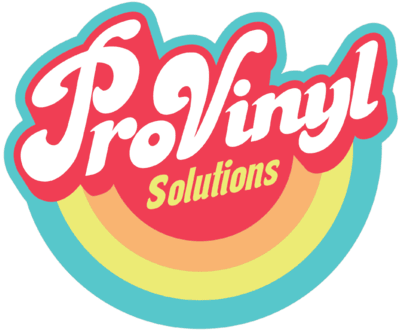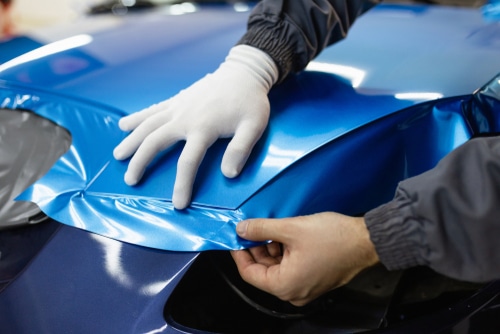The world of vehicle customization has evolved significantly in recent years, offering individuals and businesses a wide array of options to transform their vehicles. Vehicle wraps and traditional paint jobs are two prominent methods among these choices. Both have merits and drawbacks, making it essential for consumers to evaluate their preferences and needs carefully. This cost-benefit analysis explores the key factors influencing the decision between Vehicle Wraps vs. Traditional Paint Jobs, considering cost, durability, customization, maintenance, and environmental impact.
Cost Comparison for Vehicle Wraps vs. Traditional Paint Jobs
One of the primary considerations for individuals or businesses contemplating a vehicle makeover is the cost. Vehicle wraps and traditional paint jobs differ significantly in expense, which often serves as a deciding factor for many.
Vehicle Wraps
Lower Initial Cost: Vehicle wraps typically come at a lower upfront cost than traditional paint jobs. The materials used for wraps are generally more affordable, and the labor involved in the application process is also less intensive.
Reduced Labor Expenses: Wrapping a vehicle requires less time and labor, saving costs. This can be particularly advantageous for businesses that need to wrap multiple vehicles.
Easy Repairs and Replacements: If a vehicle wrap gets damaged, it can be repaired or replaced relatively quickly and without significant cost. This primarily benefits businesses with branding requirements that may change over time.
Traditional Paint Jobs
Higher Initial Cost: Traditional paint jobs are typically more expensive than vehicle wraps due to the labor-intensive process, skilled labor required, and the cost of high-quality automotive paint.
Labor-Intensive: Painting a vehicle involves numerous steps, including sanding, priming, painting, and clear-coating. Skilled technicians are necessary for a quality paint job, increasing labor costs.
Costly Repairs and Changes: Fixing paint damage or changing the color of a traditionally painted vehicle can be expensive and time-consuming. It often involves repainting the entire vehicle, which incurs substantial costs.
In the cost department, vehicle wraps have a clear advantage in terms of initial expenses. However, it’s essential to consider long-term costs, including maintenance and lifespan, before deciding.
Durability and Longevity
The durability and longevity of vehicle wraps and traditional paint jobs are critical factors for consideration. How well each option withstands wear and tear, weather conditions, and other external factors can significantly impact cost-effectiveness.
Shorter Lifespan: Vehicle wraps generally have a shorter lifespan than traditional paint jobs. Depending on the quality of the wrap material and environmental factors, a typical vehicle wrap can last between 3 to 5 years.
Protection: Wraps protect the underlying vehicle paint from minor scratches and UV damage. However, they may not provide the same level of protection as paint.
Vulnerable Edges: Wraps can be prone to damage at the edges, which may start to peel or lift over time, especially in areas with extreme weather conditions.
Traditional Paint Jobs
Longer Lifespan: A well-maintained traditional paint job can last the vehicle’s lifetime. Quality automotive paint is designed to withstand the elements and regular wear and tear.
Superior Protection: Paint provides a more robust protective layer for the vehicle’s surface, shielding it from scratches, UV rays, and corrosion.
Customization: Traditional paint allows for intricate designs, multi-layer effects, and custom finishes that can be challenging to achieve with wraps.
Traditional paint jobs have a clear edge when it comes to durability and longevity. They offer superior protection and can last as long as the vehicle itself, making them a cost-effective choice in the long run.
Customization Options
Another crucial aspect of vehicle customization is each option’s level of customization and design flexibility.
Vehicle Wraps
Versatility: Vehicle wraps provide various design options, including graphics, patterns, and full-color printing. This flexibility is particularly appealing to businesses looking to showcase their branding.
Changeability: Wraps can be easily removed and replaced with different designs, making it convenient for businesses with evolving marketing strategies or individuals seeking variety.
Innovative Finishes: Specialty finishes like matte, chrome, or metallic are readily achievable with wraps, allowing for unique and eye-catching aesthetics.
Traditional Paint Jobs
Complex Designs: Traditional paint jobs can accommodate intricate and custom designs, including hand-painted artwork or complex color schemes. Skilled painters can create one-of-a-kind masterpieces.
Time-Consuming: Achieving complex paint designs requires meticulous work and is time-consuming. This can lead to longer lead times and higher costs.
Permanent Choices: Once a traditional paint job is completed, changing the design significantly or reverting to the original finish can be challenging and expensive.
The level of customization desired plays a crucial role in the decision-making process. Vehicle wraps offer more versatility and are an excellent choice for those who want to frequently change their vehicle’s appearance or incorporate bold and creative designs. On the other hand, traditional paint jobs allow for highly customized and intricate designs, making them suitable for those looking for a more permanent and artistic touch.
Maintenance and Repairs
Maintenance and repair considerations are essential to understanding the ongoing costs associated with vehicle wraps and traditional paint jobs.
Vehicle Wraps
Low Maintenance: Vehicle wraps are relatively low maintenance. Regular washing with mild soap and water is usually sufficient to keep them clean and vibrant.
Easy Repairs: Minor damage, such as small tears or scratches on a wrap, can be repaired without needing a full replacement. This helps minimize repair costs.
Residue-Free Removal: Removing a wrap can be done without damaging the vehicle’s paint. Wraps can protect the original paint underneath.
Traditional Paint Jobs
Regular Waxing and Polishing: Painted vehicles require periodic waxing and polishing to maintain their appearance and protect the finish. This adds to the overall maintenance cost.
Costly Repairs: Repairing paint damage, such as dents, deep scratches, or fading, can be expensive and time-consuming. It may involve repainting entire panels.
Risk of Color Mismatch: Over time, the original paint can fade or change slightly due to exposure to the sun and environmental factors. Repainting may result in a color mismatch between old and new paint.
When it comes to maintenance and repairs, vehicle wraps offer cost-effective solutions. They are easier to maintain and can be repaired without significant expense. Additionally, wraps protect the original paint, preserving its condition.
Environmental Impact
Environmental considerations are becoming increasingly important in today’s world. Vehicle customization choices can have ecological implications, and individuals and businesses may prefer more environmentally friendly options.
Vehicle Wraps
Minimal Environmental Impact: Vehicle wraps generally have a lower environmental impact during application, as they involve fewer chemicals and emissions than traditional paint jobs.
Recyclable Materials: Many wrap materials are recyclable, reducing their impact on landfills. However, disposal practices vary, and choosing an eco-conscious provider is essential.
Reduced Paint Waste: Wraps can extend the life of a vehicle’s original paint, reducing the need for frequent repainting and the associated paint waste.
Traditional Paint Jobs
Paint Emissions: Traditional automotive painting involves the release of volatile organic compounds (VOCs) and other chemicals, contributing to air pollution.
Paint Waste: Traditional paint jobs generate more waste due to overspray and the need for disposal of used paint and solvents.
Potential Harmful Chemicals: Some automotive paints may contain hazardous chemicals, posing risks to the environment and workers’ health.
From an environmental standpoint, vehicle wraps are generally considered a more sustainable choice. They produce fewer emissions during installation, reduce paint waste, and can be made from recyclable materials. However, it’s essential to choose an eco-friendly wrap material and work with a responsible provider to minimize the environmental impact further.
Conclusion
The decision between vehicle wraps and traditional paint jobs ultimately depends on various factors, including budget, desired aesthetics, durability, customization options, maintenance preferences, and environmental considerations. To summarize the key points:
Cost: Vehicle wraps are more budget-friendly upfront, while traditional paint jobs require a higher initial investment.
Durability: Traditional paint jobs offer superior durability and can last the vehicle’s lifetime, while wraps have a shorter lifespan.
Customization: Wraps provide greater design versatility and changeability, while paint jobs allow for intricate custom designs.
Maintenance and Repairs: Wraps are easier to maintain and repair, with lower costs associated with minor damage. Paint jobs require regular maintenance and can be costly to repair.
Environmental Impact: Vehicle wraps are generally more environmentally friendly, with reduced emissions and paint waste.
Ultimately, the choice between vehicle wraps and traditional paint jobs depends on individual preferences and priorities. Businesses seeking temporary branding changes or vibrant, eye-catching designs may favor wraps, while individuals looking for long-term durability and custom artistry may lean toward traditional paint jobs. Careful consideration of the factors outlined in this analysis can help consumers make an informed decision that aligns with their needs and values.


Recent Comments